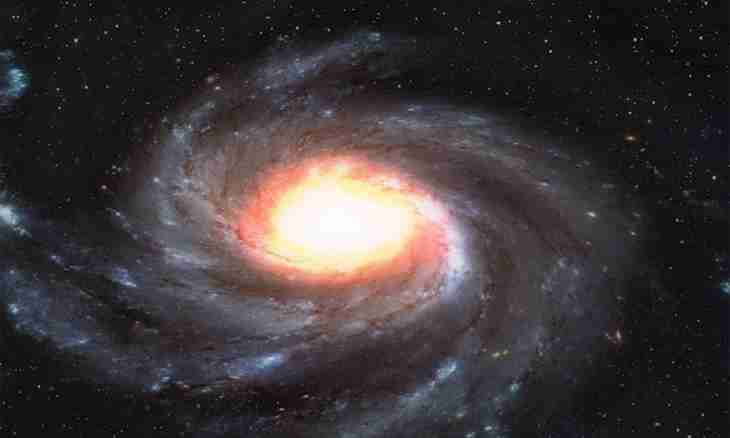The first star catalog appeared more than 2 thousand years ago. His author, the Ancient Greek scientist Gipparkh, divided stars on brightness degree into 6 sizes. For last centuries the methods of works and devices allowing to observe the star sky changed to unrecognizability. Now even stars of the 20th size are fixed. Everything, by estimates of experts, in the galaxy from 200 billion to one trillion stars. Scientists constantly set all new and new records: the biggest, the smallest, the farthest, the brightest of the known stars. Installation of records continues.
The biggest
The star - VY of the Big Dog is the biggest of all known stars of the Milky Way. The mention of it can be found in the star catalog published in 1801. There it appears how a star of the seventh size.
The red hyper giant VY of the Big Dog is at distance of 4900 light years from Earth. It in 2100 times more the Sun. In other words, if to present that VY suddenly appeared on the place of our star, then it would absorb all planets of the solar system up to an orbit of Saturn. To fly around such "ball" by plane with a speed of 900 km/hour it will be required 1100. However, at the movement at the speed of light it will take much less time – only 8 minutes.
From the middle of the 19th century it is known that VY of the Big Dog has a crimson shade. It was supposed that it is multiple. But subsequently it became clear - it is a single star and the partner at it is absent. And the crimson range of a luminescence is provided by a surrounding fog.
3 or more stars which are visible as close located are called a multiple star. If actually they just are close to a sight beam, then it is optically a multiple star if are united by gravitation – physically multiple.
At so huge sizes the mass of a star only by 40 times exceeds the mass of the Sun. Density of gases in it is very low - it explains so impressive sizes and rather small weight. Force of gravitation is not capable to prevent loss of star fuel. It is considered that so far the hyper giant already lost more than a half of the initial weight. In the middle of the 19th century the scientists noted that the huge star loses the brightness. However, this parameter and now still is very impressive – by 500 times surpasses the Sun in VY luminescence brightness.
Scientists consider: when VY fuel reaches a limit, she will explode supernew. Explosion will destroy any life on several light years around. But Earth will not be damaged – the distance is too big.
And the smallest
In 2006 in the press there was a message that the group of the Canadian scientists under the leadership of doctor Harvey Raycher found the smallest of stars of our galaxy known now. It is in a star cluster of NGC 6397 – the second in remoteness from the Sun. Researches were conducted by means of the Hubble telescope. The mass of the found star is close to theoretically calculated lower limit and is 8.3% of mass of the Sun. Existence of smaller star objects is considered impossible. Their small sizes just do not allow to begin reactions of nuclear fusion. Brightness of such objects is similar to a luminescence of the candle lit on the Moon.

